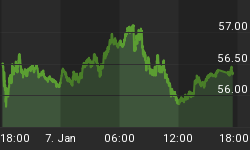In late August I wrote of an experimental approach I have been using to time short term highs and lows based on the work of George Lindsay. I wrote that my Hybrid-Lindsay model forecast a low on Wednesday, 8/28/13. The closing low came on Tuesday and the intra-day low was on Wednesday. No one was more surprised than me!
Two weeks later I wrote that the Hybrid-Lindsay model was calling for a top on 9/11/13. Whoops! The high of the post 8/28/13 rally didn't materialize until 9/18/13. You can read the commentary yourself to see why I chose 9/11/13 but the short answer is that rather than using point C (the day the Dow breaks down from a minor top formation) on 10/26/13, I should have used the alternative, point E (the high of the flattened top) on 10/19/09 (see insert). As seen in Figure 1, 10/19/09 counts 715 days to the low of the basic cycle on 10/4/11. Exactly 715 days later the market printed its most recent high on 9/18/13. My orthodox Lindsay analysis has identified this date as the high of the 2009 bull market and is fully explained in the September Lindsay Report. You can request a free copy through the Seattle Technical Advisors.com website.
Figure 1
With that top firmly in the rear-view mirror we can turn our attention to the next short-term low. This time, forecasting the low of last week's decline gets a little trickier. Lows are counted from a turning point at the high of the final basic cycle in the previous long cycle. I believe that the end of the terminal decline of the last long-cycle was on 3/6/09. That would make the high on 10/11/07 the high of the final basic cycle during that long cycle. 10/11/07 is 2,185 days prior to last Friday. Looking for a Middle Section approximately equidistant prior to 10/11/07 takes our search to October 2001. "Lo and behold!" as the preacher used to say, there is a flattened top then. While a forecast from the high of the highest top (10/26/01) has already passed (9/25/13), using another high in the top was common for Lindsay. There are two obvious choices; 10/11/01 and 10/17/01.
To shoot to the chase, 10/11/01 forecasts a low on 10/10/13 and 10/17/01 forecasts a low on 10/4/13 (last Friday). Last Friday was clearly not a low so does that mean the current decline will last until this Thursday, 10/10/13? My hybrid approach can be off by a day or two but is composed of more than just Middle Section counts. The Hybrid-Lindsay model attempts to constrict the margin of error in Middle Section forecasts by using, what Lindsay would have called, intervals of equidistance; similar to cycles but without the requirement of extending from low to low. I have identified a 66-day interval pointing to a low on Monday (one trading day past the Middle Section forecast) and the next interval forecast isn't until 10/14/13. 10/7/13 is the best point-forecast for a temporary low but allow for a margin of error of 1-2 days.
Figure 2


















